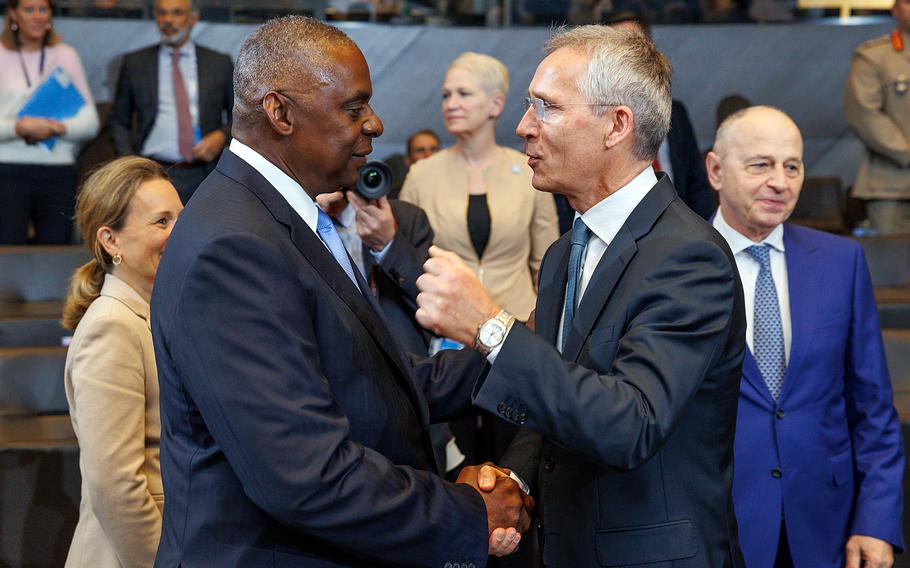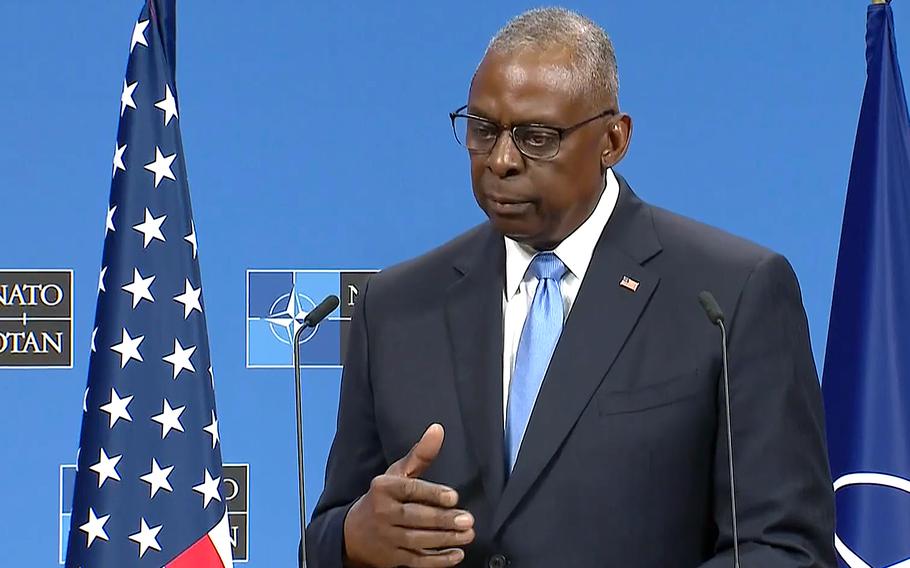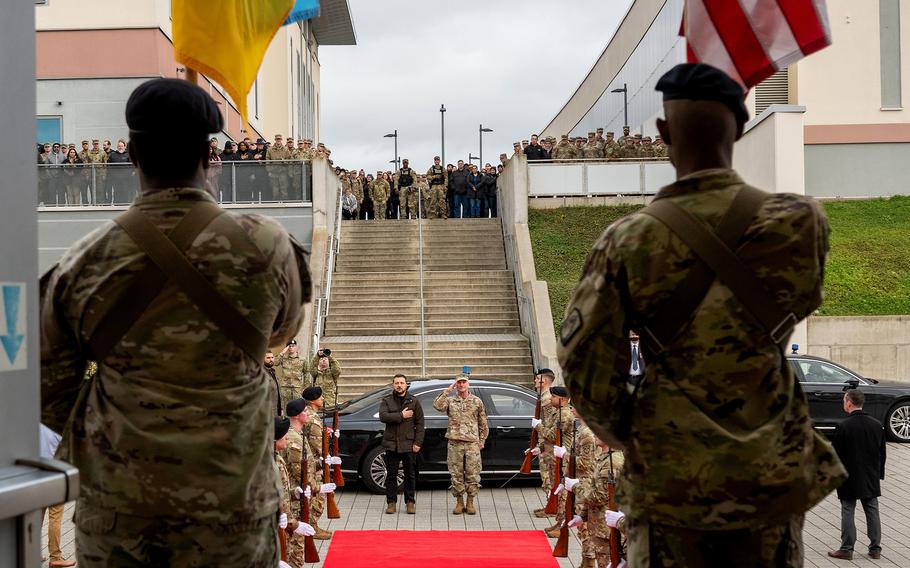
Defense Secretary Lloyd Austin talks with NATO Secretary-General Jens Stoltenberg at NATO headquarters in Brussels on June 14, 2024, during a meeting of allied defense ministers. The defense leaders could not reach an agreement on a new funding plan for Ukraine’s military. (NATO)
NATO defense leaders were unable to reach agreement Friday on a new funding plan for Ukraine’s military, with some members balking at the $40 billion annual commitment sought by the alliance’s top official.
Secretary-General Jens Stoltenberg said he will continue to push for a sturdier funding plan in the weeks leading up to NATO’s summit in July in Washington, where President Joe Biden and other heads of state are expected to approve an array of new alliance measures.
Stoltenberg wants more long-term pledges from allies when it comes to supporting Ukraine. His plan involves a commitment of funds based on a percentage of a country’s gross domestic product.
“It will give more predictability and transparency and ensure fair burden sharing within the alliance,” Stoltenberg said. “And most importantly, it will send a message to Moscow that they cannot wait us out.”
But at the end of two days of talks at NATO headquarters in Brussels, some members said such a commitment was too much.
Italian Defense Minister Guido Crosetto said Stoltenberg’s plan would mean spending nearly $4 billion annually for his government, which already fails to meet NATO’s defense spending benchmark that calls for member states to dedicate 2% of GDP to defense.
“Italy said it does not agree to the commitment. … When we reach 2%, we will discuss further investments,” Crosetto told reporters on the sidelines of the NATO meeting.

Defense Secretary Lloyd Austin answers reporters' questions at NATO headquarters in Brussels on June 14, 2024, following a meeting of the alliance's defense ministers. They did not reach an agreement on a new funding plan for Ukraine’s military. (Defense Department)
Defense Secretary Lloyd Austin, speaking at the end of the ministerial, sought to put pressure on allies who are still falling short of the 2% mark. Currently, 18 of 32 members hit the target, a sharp increase from only three members in 2014.
“But that is no substitute for each ally living up to its commitment, each and every single one,” Austin said.
Still, allies made progress in other areas, with members agreeing Friday to put NATO in charge of efforts to arm and train the Ukrainian military.
So far, that effort has been a U.S.-led mission, carried out at U.S. Army Europe and Africa headquarters in Wiesbaden. Now, a NATO command team will be set up to do the job.
Stoltenberg said the initiative will involve about 700 military personnel from various allied countries and will be led by a three-star general in Wiesbaden. That general will report to Gen. Christopher Cavoli, NATO’s supreme allied commander.
The NATO mission will include oversight of the training of Ukrainian troops at bases in allied countries as well as management of the transfer of arms to Ukraine.
“These efforts do not make NATO a party to the conflict, but they will enhance our support to Ukraine to uphold its right to self-defense,” Stoltenberg said.

Gen. Christopher Cavoli, head of U.S. European Command and NATO's supreme allied commander, meets with Ukrainian President Volodymyr Zelenskyy in Wiesbaden, Germany, on Dec. 14, 2023. Allies agreed June 14 in Brussels to put NATO in charge of efforts to arm and train the Ukrainian military, led by a three-star general in Wiesbaden who will report to Cavoli. (Susanne Goebel/U.S. European Commmand)
With the war now in its third year, the fighting in Ukraine is locked in a virtual stalemate. In recent weeks, Russia has made incremental gains, but U.S. and NATO officials say they have seen no sign that Russian forces are poised for any major breakthrough.
On Friday, Putin said he was ready for a cease-fire in Ukraine, stipulating that if Kyiv gives up its NATO ambitions and withdraws from a swath of territory in eastern Ukraine, he will halt hostilities.
Both Austin and Stoltenberg panned Putin’s proposal.
“He is not in any position to dictate to Ukraine. … He could end this today if he chose to do that. And we call upon him to do that and to leave Ukrainian sovereign territory,” Austin said.
Added Stoltenberg: “It’s not for Ukraine to withdraw forces from Ukrainian territory. It’s for Russia to withdraw their forces from occupied Ukrainian land.”